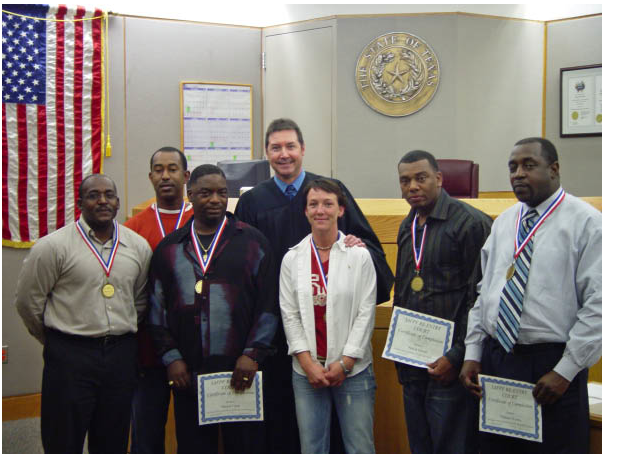
It is generally thought that the court’s have little recourse or jurisdiction to affect a prison sentence once that sentence has been announced. The truth is, that most state courts have significant jursdiction to alter, amend or modify a prison sentence. Depending on the state, jurisdiction to recall may exist for a period of one month to one year after sentencing.The most obvious purpose of a “front-loaded intervention”, is to order a convicted felon to state prison for an evaluation, assessment, or other purpose, immediately before or after sentence has been imposed.
While this power is found in most state courts, it is most often used by individual judges on a case by case basis. Some courts, in particular drug courts, will use front-loaded jurisdiction to create what can be called a “court-based reentry system” . A recent example of such a court-based reentry intervention occurred in New Mexico, where a drug court judge ordered a program violator into prison (before sentencing) for a sixty day evaluation, to be returned to court, for sentencing (see:Preentry Prison Evaluation used in New Mexico )
Similarly, jurisdiction exists in many states to recall the felon, after sentencing, for re-consideration and potential re-sentencing. The intention to recall may be announced at the time of sentence, or the decision to recall may be discretionary with the judge within the statutory period. This form of preentry intervention is often used to encourage a serious attitude change on the part of a prospective long-tern prisoner.
The judge may use their jurisdiction to sentence the felon to prison as part of a court-ordered treatment program, with the understanding that the offender is to undergo treatment before returned to court for re-sentencing. If the felon is found in compliance, the court will return the felon to a court-based probation program in the community.
The Dallas Reentry Court is a excellent example of the extraordinary innovation (and sometimes bewildering variation) among pre-entry courts, that divert offenders from a prison sentence to a probation based custodial program. What makes the Dallas SAFPF Program unique, is that its custodial segment is actually situated on prison grounds, yet program participants are segregated from the prison population, and never leave the jurisdiction of the County SAPFP Court Program.
The Texas legislature’s “4C program” provides in-custody facilities within the prison’s outer perimeter , and uses specially trained, but regular prison guards. Although there are approximately ten jurisdictions that take advantage of “4c” facilites, Dallas is by far the largest, and the only one that has a court and judge dedicated to the reentry mission. Seventeen Dallas judges sentence drug offenders to the SAFPF program, but when offenders finsh their in-custody treatment (typically 6 to 9 months), they enter a dedicated Reentry Court for monitoring, continued treatment and rehabilitative services.
Judge Robert Francis, a retired judge, works full time as the reentry court judge. He and his staff take regualr trips to the “4C” facilities to check up on Dallas based offenders. Plans are in the works to reward those who do well well in the in-custody program. Though the progam is less than a year old, 275 participants have completed the in-custody “4C” treatment program, and been released into the care and custody of Judge Francis and the Dallas SAFPF Reeentry Court, where revocations are at an extraordinarily low 5% (Dallas SAFPF Reentry Court)
Boone County, Mo. is an example of a jurisdiction that has uses its front-loaded court jurisdiction to send drug dependent violators to prison for a period of up four months for treatment, to be returned to Judge Chris Carpenter’s Reentry Court (or what some describe as a Preentry Court), for further probation rehabilitation and monitoring in the community. Columbia, Missouri’s “Reintegration Court” is considered a Reentry Court, as it provides a comprehensive rehabilitation program, focused on the whole individual, his/her risk of recidivism, and relies on evidence based practices after the prison term. (see: Columbia Missouri)
The above are just some of the existing variations in the courts’ use of a brief and immediate prison term, to be followed by recall to the court for sentencing or reconsideration of a sentence previously imposed. They are considered here because they are generally thought of as a successful rehabilitation strategy (and in the case of Boone County, a Reentry Court Program), designed to get the offender’s attention, assess their suitability for probation, and give them one last chance to change their behavior before a substantial prison sentence is imposed. It should be seriously considered on the program level as an alternative to prison, and as a way to reach out to large numbers of offenders that otherwise would be on their way to long prison terms.

